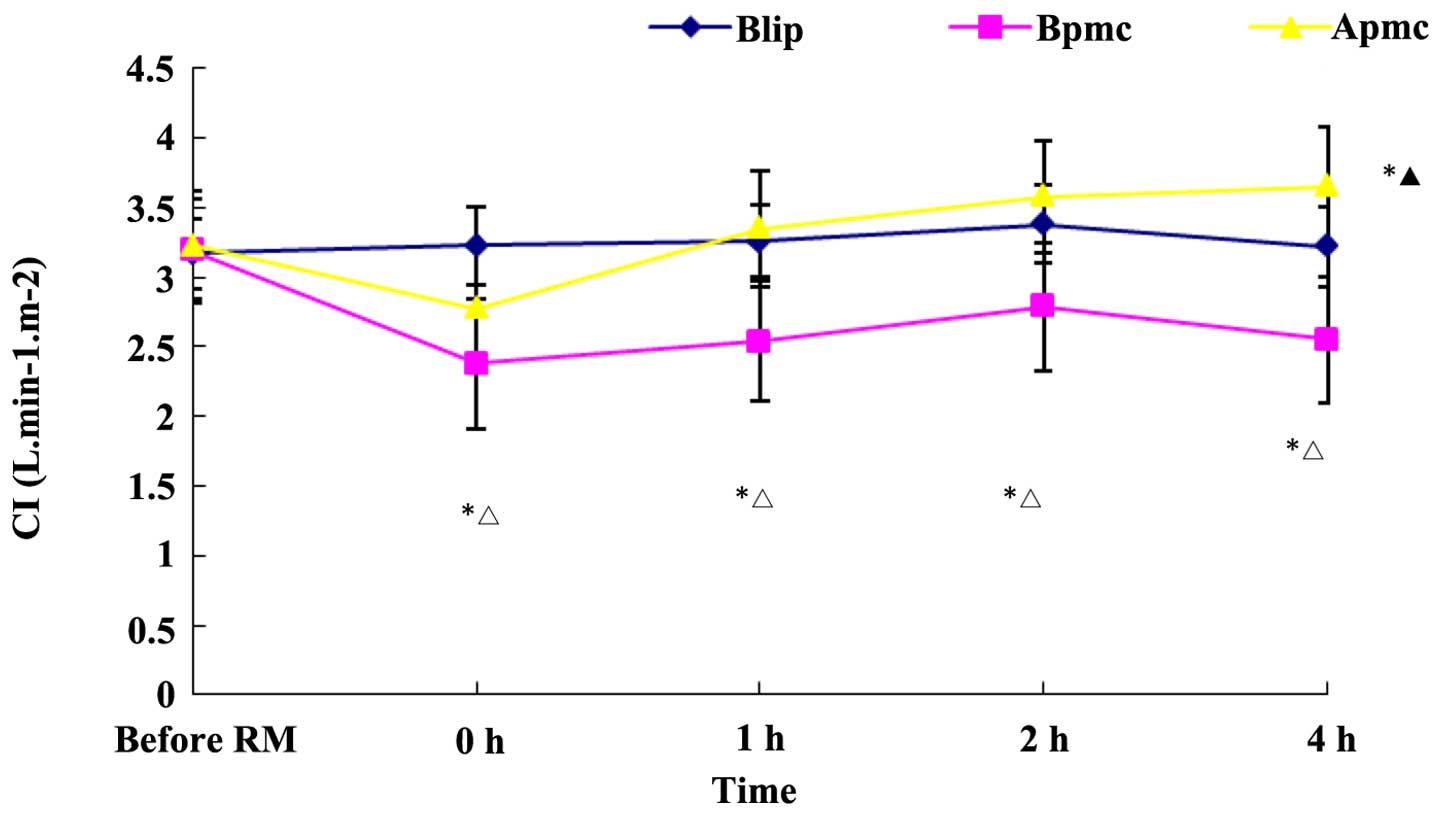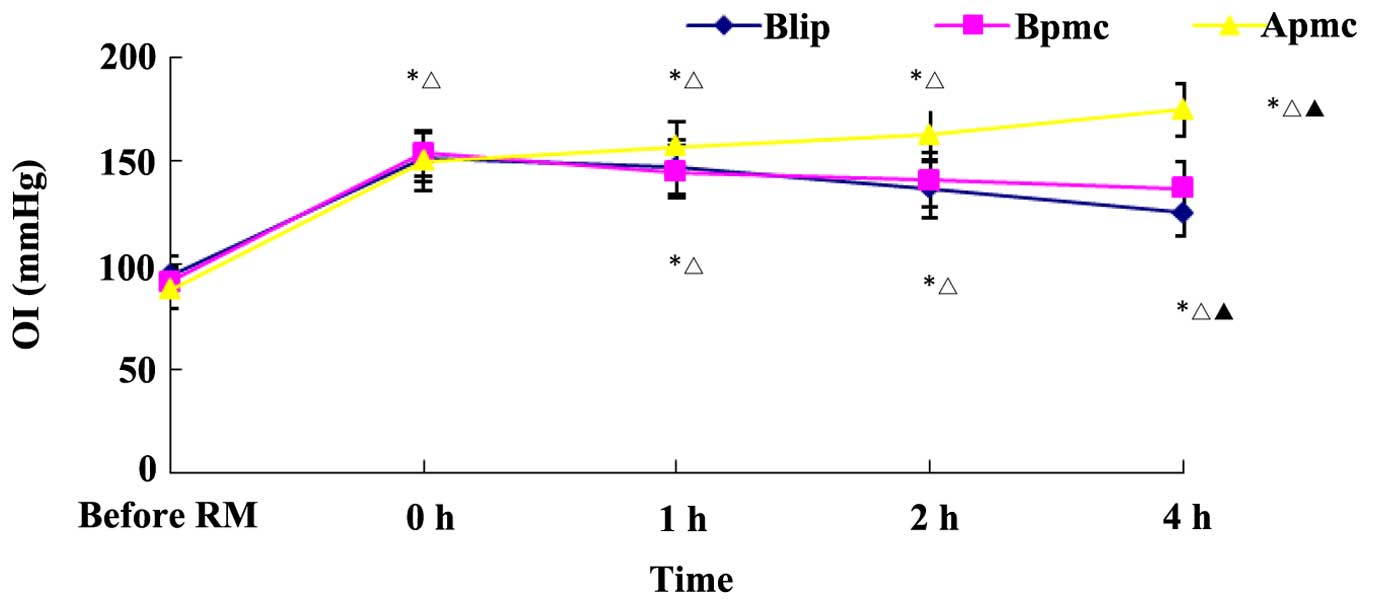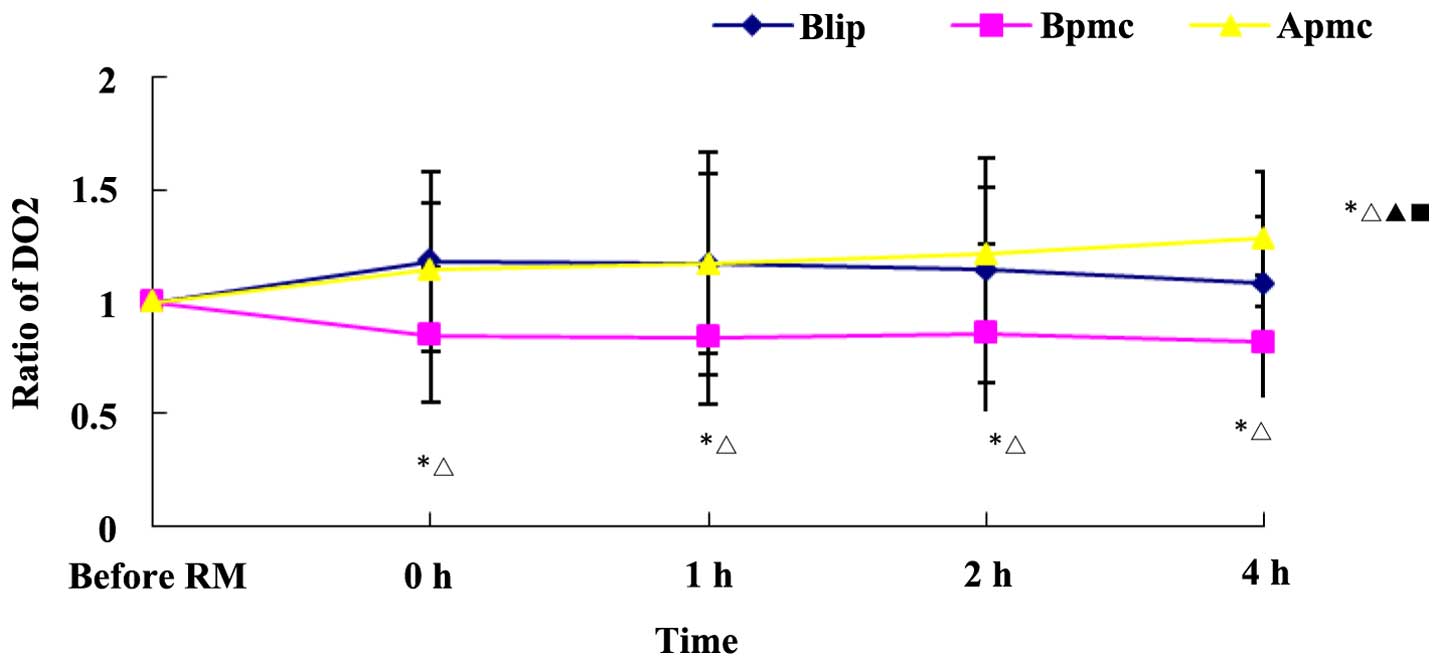Effect of setting high APRV guided by expiratory inflection point of pressure-volume curve on oxygen delivery in canine models of severe acute respiratory distress syndrome
- Authors:
- Published online on: June 15, 2016 https://doi.org/10.3892/etm.2016.3456
- Pages: 1445-1449
-
Copyright: © Li et al. This is an open access article distributed under the terms of Creative Commons Attribution License.
Metrics: Total
Views: 0 (Spandidos Publications: | PMC Statistics: )
Total PDF Downloads: 0 (Spandidos Publications: | PMC Statistics: )
Abstract
In the present study, the effect of setting high airway pressure release ventilation (APRV) pressure guided by an expiratory inflection point of pressure-volume (PV) curve following lung recruitment maneuver (RM) on oxygen delivery (DO2) in canine models of severe acute respiratory distress syndrome (ARDS) was examined. Canine models of severe ARDS were established by intravenous injection of oleic acid. After injection of sedative muscle relaxants, a PV curve plotted using the super-syringe technique, and the pressure at lower inflection point (LIP) at the inhale branch and the pressure at the point of maximum curvature (PMC) at the exhale branch were measured. The ventilation mode was biphasic positive airway pressure (BiPAP), an inspiration to expiration ratio of 1:2, and Phigh 40 cm H2O, Plow 25 cm H2O. Phigh was decreased to 30 cm H2O after 90 sec. The dogs were randomized into 3 groups after RM, i.e., Blip group, BiPAP Plow = LIP+2 cm H2O; Bpmc group, BiPAP Plow = PMC; and Apmc group. In the APRV group, Phigh was set as PMC, with an inspiratory duration of 4 sec and expiratory duration of 0.4 sec. PMC was 18±1.4 cm H2O, and LIP was 11±1.3 cm H2O. Thirty seconds after RM was stabilized, it was set as 0 h. Hemodynamics, oxygenation and DO2 were measured at 0, 1, 2 and 4 h after RM in ARDS dogs. The results demonstrated: i) cardiac index (CI) in the 3 groups, where CI was significantly decreased in the Bpmc group at 0, 1, 2 and 4 h after RM compared to prior to RM (P<0.05) as well as in the Blip and Apmc groups (P<0.05). CI in the Blip and Apmc groups was not significantly altered prior to and after RM. ii) Oxygenation at 0, 1, 2 and 4 h in the 3 groups was improved after RM and the oxygenation indices for the 3 groups at 1 and 2 h were not significantly different (P>0.05). However, the oxygenation index in the Blip group at 4 h was significantly lower than those at 0 h for the Apmc and Bpmc groups (P<0.05). Oxygenation for the Apmc group at 4 h was higher than that for the Blip and Bpmc groups (P<0.05). Oxygenation for the Bpmc group was lower than that at 0 h, although the difference was not significant (P>0.05). iii) DO2 in at 0, 1, 2 and 4 h in the Bpmc group was significantly lower than that in the Blip and Apmc groups, and not significantly improved after RM. DO2 in the Blip and Apmc groups after RM was improved as compard to that before RM and that in the Bpmc group. However, DO2 at 4 h in the Blip group was significantly lower than that at 0 h and in the Apmc group (P<0.05). DO2 at 4 h in the Apmc group was higher than that at 0 h and that in the remaining 2 groups (P<0.05). In conclusion, high APRV pressure guided at PMC of PV curve after RM significantly improved DO2 in ARDS dogs.












